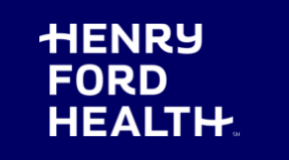Safety and Efficacy of New Anticoagulants for the Prevention of Venous Thromboembolism After Hip and Knee Arthroplasty: A Meta-Analysis
Recommended Citation
Venker BT, Ganti BR, Lin H, Lee ED, Nunley RM, and Gage BF. Safety and efficacy of new anticoagulants for the prevention of venous thromboembolism after hip and knee arthroplasty: A meta-analysis J Arthroplasty 2017; Feb;32(2):645-652.
Document Type
Article
Publication Date
2-1-2017
Publication Title
The Journal of arthroplasty
Abstract
BACKGROUND: Venous thromboembolism (VTE) is a common and potentially fatal complication of arthroplasty.
METHODS: We reviewed randomized trials to determine which anticoagulant has the best safety and efficacy in hip and knee arthroplasty patients. We searched PubMed, MEDLINE, and EMBASE through January 2016.
RESULTS: Compared to enoxaparin (most commonly dosed 40 mg once daily), the relative risk (RR) of VTE was lowest for edoxaban 30 mg once daily (0.49; 95% confidence interval [CI], 0.32-0.75), fondaparinux 2.5 mg once daily (0.53; 95% CI, 0.45-0.63), and rivaroxaban 10 mg once daily (0.55; 95% CI, 0.46-0.66), and highest for dabigatran 150 mg once daily (1.19; 95% CI; 0.98-1.44). The RR of major/clinically relevant bleeding was lowest for apixaban 2.5 mg twice daily (0.84; 95% CI; 0.70-0.99) and highest for rivaroxaban (1.27; 95% CI, 1.01-1.59) and fondaparinux (1.64; 95% CI, 0.24-11.35). Fondaparinux was the only agent that was more effective than enoxaparin 30 mg twice daily (VTE RR = 0.58; 95% CI, 0.43-0.76).
CONCLUSION: With the possible exception of apixaban, newer anticoagulants that lower the risk of postoperative VTE increase bleeding.
Medical Subject Headings
Anticoagulants/therapeutic use; Arthroplasty; Replacement; Knee/adverse effects; Dabigatran; Enoxaparin; Fondaparinux; Hemorrhage; Humans; Morpholines; Polysaccharides; Pyrazoles; Pyridones; Rivaroxaban; Thiophenes; Venous Thromboembolism/etiology/prevention & control; anticoagulant; arthroplasty; bleed; deep vein thrombosis; meta-analysis; thromboembolism
PubMed ID
27823844
Volume
32
Issue
2
First Page
645
Last Page
652


